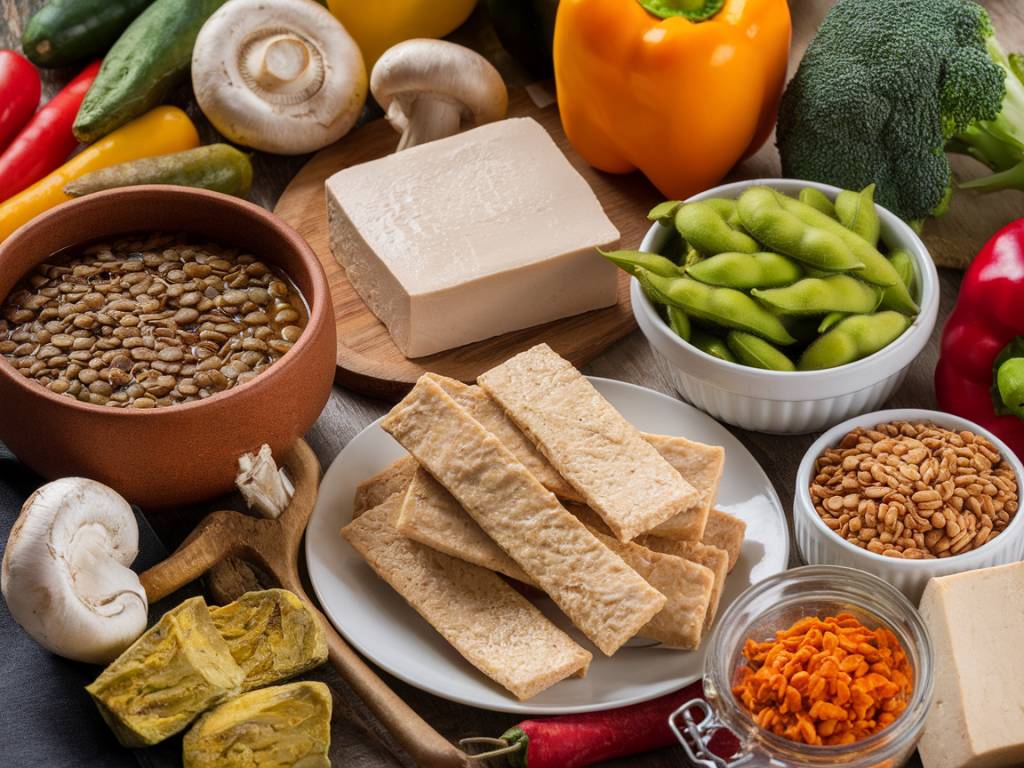The Role of Protein in a Plant-Based Diet
Switching to a plant-based diet is a decision often driven by health, ethical, or environmental considerations. But if you’re new to this lifestyle, one question likely surfaces quickly: « Am I getting enough protein? » Protein is vital for everything from building muscle to supporting our immune system. The good news? You can absolutely meet your protein needs on a plant-based diet—it just requires some intentional planning and knowledge of plant-based protein sources.
Why Is Protein Important?
Let’s start with the basics. Protein is a macronutrient, meaning your body needs it in large amounts to function properly. It’s made up of amino acids, which are often described as the building blocks of life. Protein is crucial for repairing tissue, producing enzymes and hormones, and maintaining muscle mass among many other functions. Think of it like the scaffolding that keeps your body strong and operational.
But here’s the kicker: Our bodies can’t produce all of the amino acids we need, so we have to get them through food. These are called “essential amino acids,” and plant-based eaters have to be strategic to ensure their diet provides enough of these essentials.
Complete vs. Incomplete Proteins—Does It Really Matter?
If you’ve heard talk about “complete” or “incomplete” proteins, don’t worry—it’s not as intimidating as it sounds. Complete proteins contain all nine essential amino acids in sufficient amounts. Foods like meat, eggs, and dairy fall into this category, but so do plant-based options like quinoa, soy (tofu, tempeh, edamame), and chia seeds.
Most plant proteins, however, are “incomplete,” meaning they’re missing one or more essential amino acids. Does this mean you can’t get enough protein on a plant-based diet? Absolutely not. By eating a variety of plant-based foods over the course of a day, you’ll naturally combine different protein sources and cover all your amino acid needs. This is often referred to as “protein combining.” For example, pair rice with beans or hummus with whole-grain bread.
Great Sources of Plant-Based Protein
One of the beauties of a plant-based diet is the diversity of foods it introduces. Let’s explore some protein-rich options that can keep your meals delicious and nutrient-dense:
- Legumes: Lentils, chickpeas, black beans, and other legumes are rich in protein and fiber. Plus, they’re incredibly affordable and versatile—think soups, stews, salads, and even plant-based burgers.
- Nuts and Seeds: Almonds, sunflower seeds, hemp seeds, pumpkin seeds, and walnuts are great snacks and can be used in smoothies or as toppings for salads and oatmeal.
- Whole Grains: Quinoa, farro, bulgur, and oats not only provide protein but also offer a wealth of other nutrients like fiber and B vitamins.
- Tofu, Tempeh, and Edamame: These soy-based foods are protein powerhouses and can be incorporated into stir-fries, salads, or simply roasted with some olive oil and seasoning.
- Vegetables: Yes, even veggies like spinach, broccoli, and peas include protein. While they’re not as dense in protein as beans or tofu, they still contribute to your overall intake.
- Plant-Based Protein Powders: These can be helpful for busy days or post-workout fuel. Look for options made from pea, rice, or hemp protein.
The key is to mix and match these sources to create nourishing and satisfying meals. If it feels overwhelming at first, try starting with one or two protein-rich items in each meal, and experiment from there.
Common Myths About Protein in Plant-Based Diets
When people hear “plant-based,” it’s not uncommon for myths about protein to surface. Let’s clear up a few:
- Myth #1: You can’t build muscle on a plant-based diet. Not true. Many plant-based athletes thrive while consuming plant proteins. It’s all about eating enough calories and balancing your macronutrients.
- Myth #2: You need protein at every meal. While it’s good to distribute protein throughout your day, your body doesn’t mind if some meals are lighter in protein while others are packed.
- Myth #3: You need to eat all essential amino acids together. The idea of “combining proteins” in every single meal is outdated. As long as you eat a variety of protein sources over the course of the day, you’ll be just fine.
Understanding these myths can help you approach your diet with confidence and clarity.
Practical Tips for Getting Enough Protein
Integrating enough protein into a plant-based diet doesn’t have to be difficult. Here are some practical strategies to keep you well-fueled:
- Plan ahead: Batch cook lentils, chickpeas, or quinoa to have on hand for quick meals.
- Snack smart: Swap chips or sugary snacks for protein-dense options like roasted chickpeas, nuts, or hummus with sliced vegetables.
- Experiment with recipes: Search for plant-based recipes that prioritize protein-rich ingredients, like tempeh stir-fry or lentil spaghetti Bolognese.
- Use nutritional yeast: Not only is it high in protein, but it adds a cheesy flavor that’s perfect for soups, sauces, and salads.
- Add seeds to your meals: A sprinkle of chia or hemp seeds can go a long way in boosting protein and omega-3 intake.
Small, consistent actions like these can make a big difference, and they’ll help keep your meals interesting and enjoyable.
A Plant-Based Journey to Health
Transitioning to a plant-based diet is a personal journey, and there’s no one-size-fits-all recipe for success. Learning to meet your protein needs is just one step in discovering the rich flavors, vibrant ingredients, and health benefits this lifestyle has to offer. Whether you’re here for a Meatless Monday or fully committed to a vegan lifestyle, remember: It’s not about perfection, but progress. With time, you’ll find your rhythm and realize that eating plant-based is just as much about nourishment as it is about pleasure.
So, the next time someone asks, “Where do you get your protein?” you’ll not only have the answer, but maybe even a recipe or two to share.
